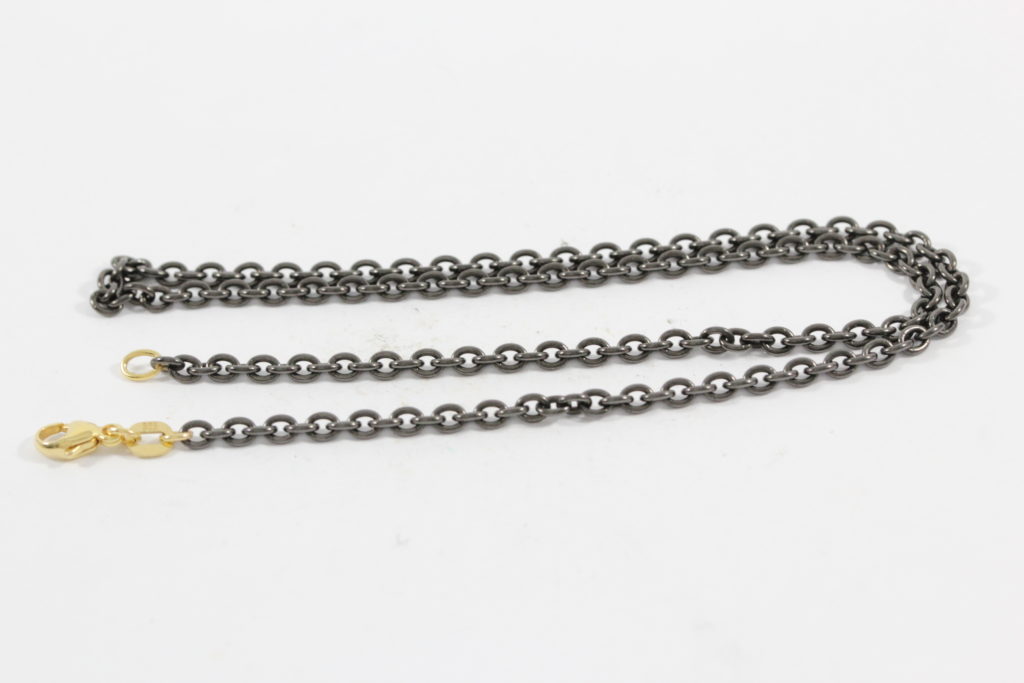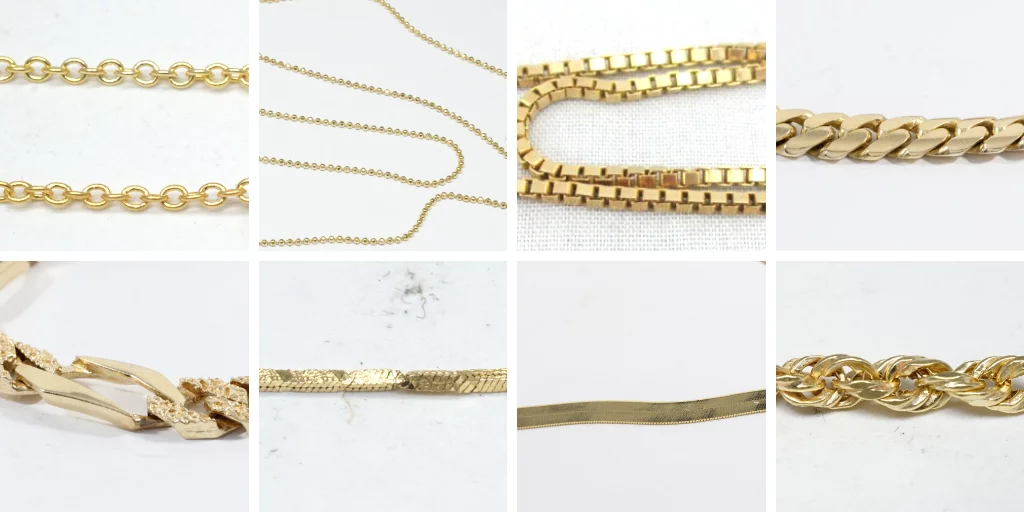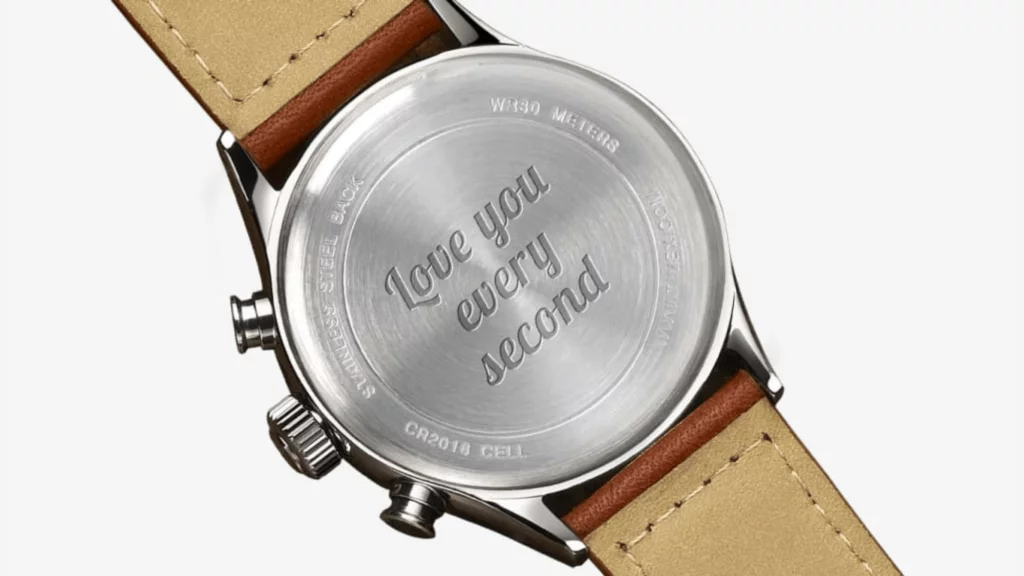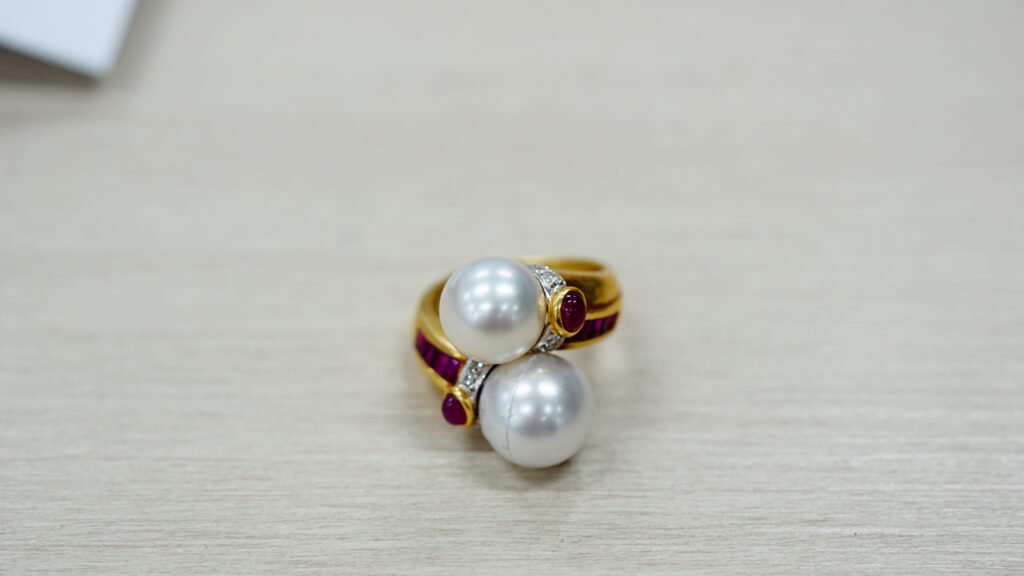How To Buy A Durable Necklace Chain
Written by Annabelle
April 2, 2020

Chains are pretty important- these pieces of jewelry are responsible for holding on to your precious pendant, after all! But you can’t just purchase them at random- there are a few things for you to keep in mind if you’re planning on buying one for yourself. Here’s what you need to know about buying a durable necklace chain.
Different Chain Types, Different Durability

From top left and clockwise: cable, ball, box, cuban, figaro, snake, herringbone, rope
While you might be thinking about getting a herringbone chain because of how nice it looks, or maybe a hollow rope chain because of its lightness and affordability, we’re here to tell you that not all chains are created equal. Design is definitely important when it comes to buying jewelry, but if you want the most bang for your buck and the most durable option, you’re going to have to do some research. Here’s a list of popular chain types and what we recommend for buying a durable necklace chain:
- Cable chain – Classic, simple links. This chain is fairly sturdy at standard widths of 1mm, but make sure to purchase one that isn’t paper thin. The thickness of the link’s metal is important- if it’s wispy, it’s more likely to snap, break, bend, or tangle.
- Ball chain – These chains are cute, but they’re easy to pull apart and never quite the same after chain repair because the jeweler can only solder or laser the broken area. This is because ball chains don’t have links that are looped through one another, like a cable chain.
- Box chain – Much like the cable chain, this chain is durable if the width and thickness are sufficient. Aim for something around 1.5 mm to ensure that it can take the weight of most pendants.
- Rope chain – While you may have heard a lot of gossip about these chains being durable, we’re here to tell you that they’re an absolute nightmare to repair. They look nice, and they can be fairly resistant to damage if constructed properly, but a lot of mass-manufactured rope chains actually unravel and snap over time. Once they do, soldering them means that you have an unsightly glob of repair at one area, and the integrity of the chain will never be the same again- it’ll always be weaker at that one point. Hollow ones are even worse, and don’t even think about placing a pendant on a repaired hollow rope chain because it’ll snap just like that.
- Herringbone and snake chains – Snake chains are easy to solder, but they’ll also be weaker at the point of repair. Herringbone chains are impossible to fix, due to their pattern. Once broken, the area of repair will never look the same and there will be an extremely visible mark in that location. They’re not suitable for pendants at all and even when worn alone they need to be treated and stored with the utmost care to preserve the look.
Buying A Durable Necklace Chain
Now that you’re aware of which chain types to avoid, there are a few other things to take into account that we’ve already briefly mentioned.
- Width: As a general rule, the thicker the chain, the more durable it is. Most chains are 1mm to 1.5mm, which is sturdy enough to hold most small to medium sized pendants. If you go below 1mm, just keep in mind that a thinner chain is less strong, even if it has a daintier look.
- Link Thickness: Not all chains that are the same width have the same link construction. A cable chain that has thicker links is less likely to snap than another cable chain of the same width with thinner links. You can usually determine which one has more metal if you compare them by their metal weight, assuming everything else matches (length, style, and width.)
- Pendant Weight: The heavier the pendant, the stronger the chain you’ll need in order to wear it. If your pendant is a hefty medallion, don’t opt for a 1mm chain- go up accordingly in width to compensate for its weight.
Now you know how to buy a durable necklace chain! If you have something that you’re looking to purchase or replace, hit us up in the comments. We can source and assemble a new chain for you.



Ross Simmons 2 mm 14k yellow gold rope necklace for 199.00 free shipping. Good deal?
Your advice is so vague that someone who knew absolutely nothing about jewelry could have written. “Hey if your pendant is heavy then get a stronger chain. ” Don’t you think we could figure that out on our own? Do you think anyone thought? Well my pendant is heavy I ought to go with a lighter chain? With all your experience in jewelry you couldn’t give a real guideline to how heavy a chain needs to be for pendants of 5 to 10 grams, 10-20 grams, 30-40 grams, 40 -50 grams? My pendant is 54 grams and no one will… Read more »